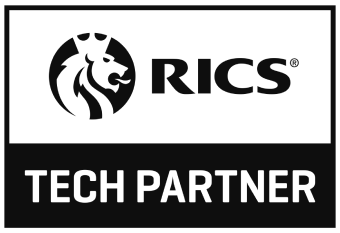
Embracing Technology: The Architect's Pathway to Winning Work
Architects today face a complex landscape as they compete for new projects. The world of architecture is constantly evolving, making the pursuit of commissions increasingly challenging.
The industry, overflowing with talent and innovation, requires architects not only to excel in design but also to distinguish themselves in a competitive market. The key to overcoming these challenges? Technology. Let's delve into the struggles architects face in securing work and how technological advancements offer a beacon of hope.
The Struggle to Stand out
|

|
Furthermore, the process of bidding for projects can be both time-consuming and resource-intensive. Architects are required to invest significant amounts of time in preparing detailed proposals, often with no guarantee of success. This investment can be particularly challenging for smaller firms or independent architects who may lack the resources of larger practices.
Bridging the Gap with Technology
This is where technology steps in as a game-changer. Digital tools and platforms offer architects innovative ways to showcase their work, connect with potential clients, and streamline their operations. Here are a few areas where technology can make a significant impact:
- Digital Twins: The Future of Collaboration and Sustainability
Digital twins take the concept of 3D modelling further by creating virtual replicas of physical buildings. These models are dynamic, updated in real-time to reflect changes during the construction phase and beyond. Digital twins allow for unparalleled collaboration among architects, clients, and contractors, ensuring that all stakeholders have a clear, consistent view of the project. This technology also plays a crucial role in sustainable design, enabling architects to simulate and analyse energy usage and environmental impact, making a compelling case for their projects in an increasingly eco-conscious market.
- 3D Modelling: A New Dimension of Design
3D modelling software enables architects to create detailed and immersive representations of their projects. This technology allows potential clients to visualise designs in a comprehensive and engaging manner, far beyond the capabilities of 2D sketches or static images. By leveraging 3D modelling, architects can effectively test multiple variations as well as communicate their visions, facilitating a deeper understanding and appreciation of their work, thereby enhancing their chances of winning bids.
- Social Media and Content Marketing: Telling Your Technological Story
In addition to leveraging 3D modelling and digital twins, architects must also harness the power of social media and content marketing. By sharing their experiences and successes with these technologies, architects can demonstrate their commitment to innovation and sustainability. Engaging content that showcases the use of 3D models and digital twins in the design process can attract attention and generate interest, opening doors to new opportunities.
The Architects Journal have published a list of the most popular social media accounts of architects in the UK if you're looking for some of that well-needed inspiration.
- Project Efficiency and Client Satisfaction
Technologies like project management software, when integrated with 3D modelling and digital twins, streamline the design and construction process. They not only enhance operational efficiency but also significantly improve project delivery and client satisfaction. This holistic approach to project management, powered by technology, positions architects as leaders in the field, capable of handling complex projects with precision and care.
What's next?
The architectural landscape is shifting, with technology playing a pivotal role in shaping its future. For architects, embracing 3D modelling platforms and the innovative concept of digital twins is not just about staying relevant; it's about setting themselves apart in a highly competitive market.
These technologies offer more than just efficiency and collaboration; they are tools for storytelling, allowing architects to bring their visions to life in ways that were previously unimaginable. In doing so, they not only enhance their chances of winning work but also contribute to the advancement of architecture as a discipline.
As we look to the future, it's clear that those who harness the power of technology will lead the way, transforming challenges into opportunities for innovation and success.
Share This Article
Share On Facebook
Share On Twitter
Share On LinkedIn
Join the Community
Updates, business insights, webinars and more.
Google Privacy Policy and Terms of Service apply.















